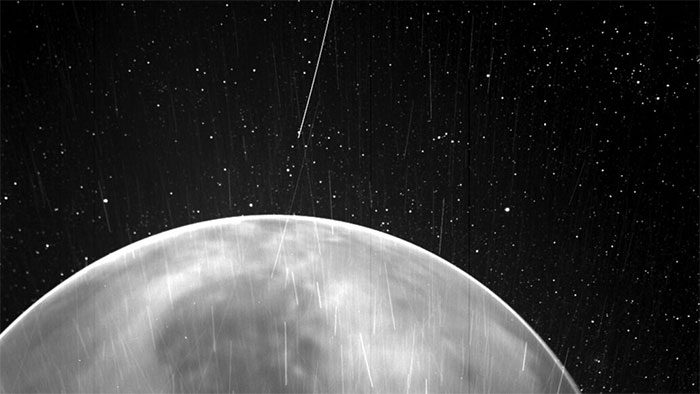By chance, NASA’s Parker Solar Probe has captured images of the surface of Venus from space for the first time.

The Parker Solar Probe has peered through the clouds of Venus to take the first images of the planet’s surface. The large dark spots in the center are Aphrodite Terra, a highland region. The bright streaks are caused by charged particles and dust. (Image: NASA).
Despite the planet’s “rocky body” being concealed beneath a thick layer of clouds, the telescopes on NASA’s Parker Solar Probe have captured the first visible-light images of the surface of Venus from space, researchers reported in the Geophysical Research Letters on February 16.
“We have never actually seen the surface through the clouds at these wavelengths before,” said Lori Glaze, Director of NASA’s Planetary Science Division, on February 10 during a live broadcast on Twitter.
Although the Parker Solar Probe was designed to study the sun, it frequently flies by Venus. The planet’s gravity affects the probe, tightening its orbit and bringing it closer to the sun. These assists from Venus have enabled the spacecraft to become the first probe to enter the sun’s atmosphere.
The Parker Solar Probe moves around the sun in a highly elliptical orbit, as illustrated in this video. To tighten its loops and bring it closer to the brilliant star, the probe slows itself down by flying near Venus, using the planet’s gravity as a brake.
It was during two such flybys in July 2020 and February 2021 that the probe’s WISPR telescope captured new images. While the day side of Venus is too bright to capture, WISPR was able to distinguish large-scale surface features, such as the vast highland area known as Aphrodite Terra, through the clouds on the night side.





















































